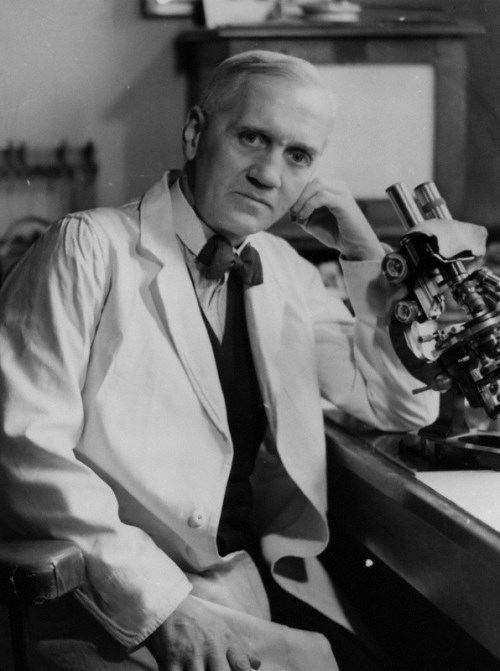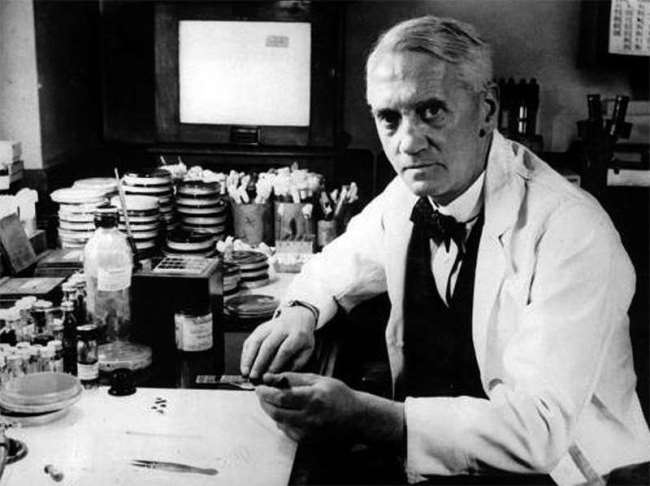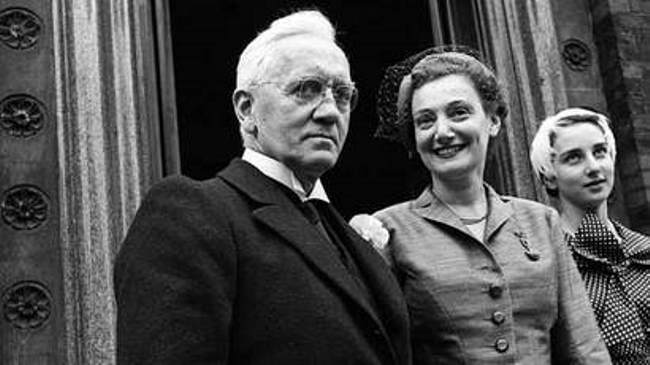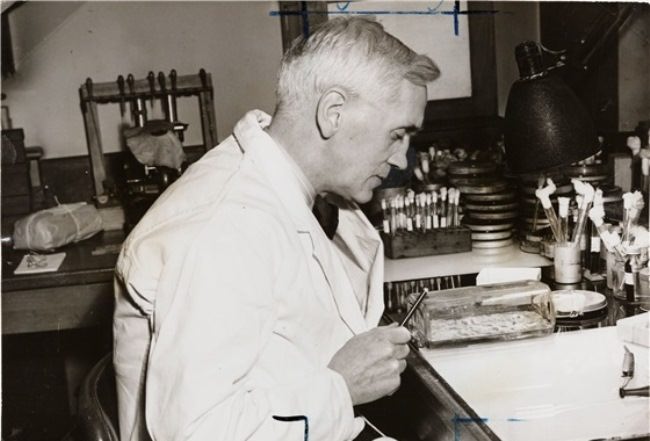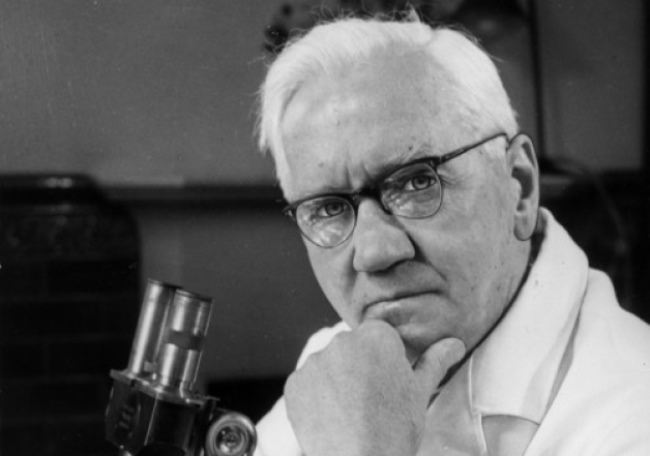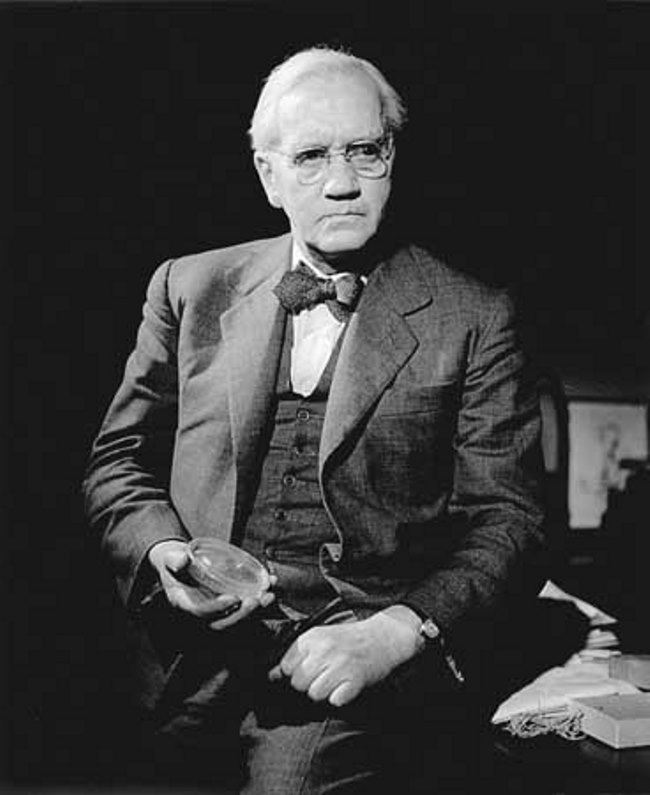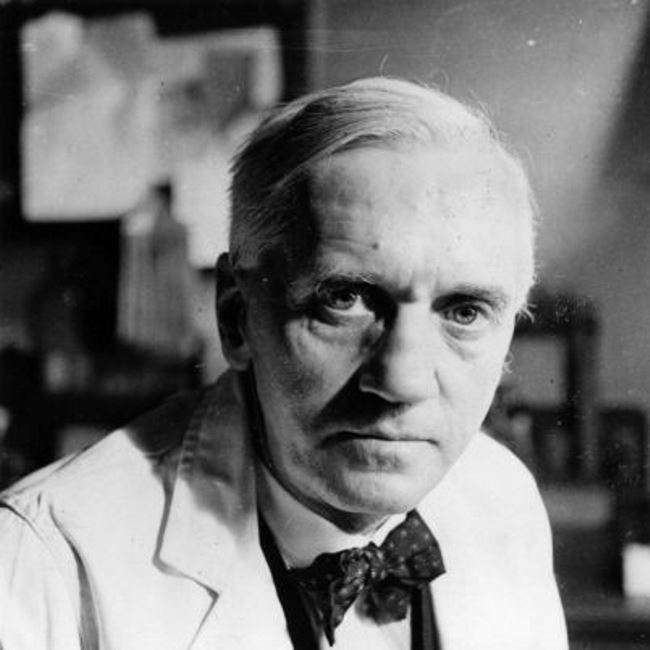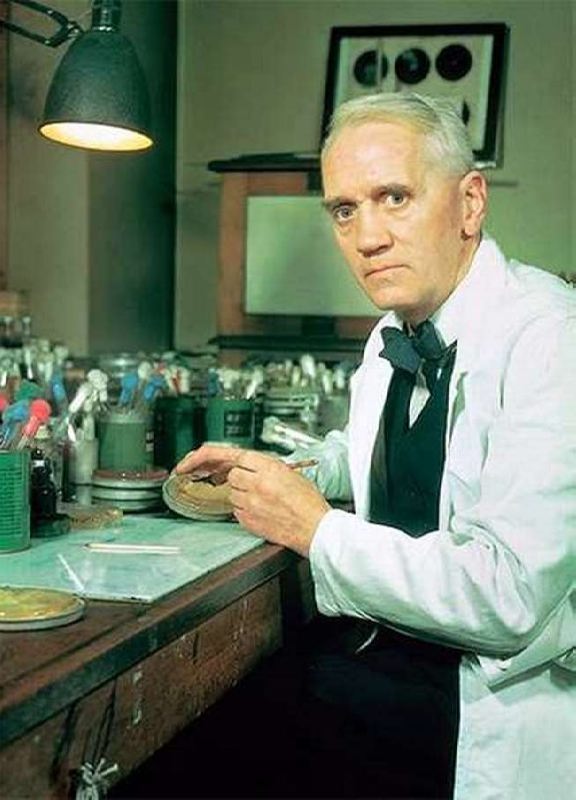Alexander Fleming – Scottish bacteriologist
London newspapers published cartoons: “Alexander Fleming collects … tears! And not just asks to bring him, but even pays three pence for a portion (then you could buy two pies with raisins).” In the early 1920’s, no one had guessed that he would make the greatest discovery.
He saw hundreds of deaths in the First World War. Lieutenant Alexander Fleming and his teacher, Professor Almroth Wright, were sent to the front and spent four years in a hospital near France. As a bacteriologist (although he often had to help surgeons), he saved many lives, primarily by preventing infectious diseases.
It turned out that in war the infection was much more dangerous than in everyday life. At the St. Mary’s Hospital in London, where Fleming had worked for several years before the outbreak of the war, they fought quite successfully with infections.
In the 1860s the English surgeon Joseph Lister developed a method for decontaminating instruments and rooms with the help of carbolic acid. Mortality from hospital-acquired infection had dropped dramatically.
But the war was another thing. Often, the wounded were waiting for help on the battlefield for several hours and the microbes managed to penetrate deeply into the tissue. Infection of blood – sepsis – was the usual cause of the death of soldiers and officers.
It was then that young doctor Alexander Fleming set a goal. He wanted to find a way to save people from infection by all means. He knew his main opponents – staphylococcus and clostridia.
After the war in 1918, the captain of the medical service Fleming resigned from the army and returned to St. Mary’s Hospital, where he began to work with Professor Wright. They got along well and, although they often had different scientific views, respected each other’s opinion.
There was a kind of chaos in his laboratory for ordinary people. But everything had sense for the owner of the laboratory. Fleming did not wash anything not from laziness and forgetfulness, but in the hope of observing something unusual.
In 1921 he noticed! In one of the agar plates, colonies of microbes grew, but for some reason a fairly large area remained pure. Something affected the pathogenic contents of the dish. Fleming remembered that at that time he caught a cold and a drop from his nose fell into the dish. The scientist repeated the experiment. It turned out that there was something in the human body that killed microbes! He decided to try a human tear. The result was even more noticeable. So, Fleming needed more tears for further experiments and he bought them…
When everything became clear with this antimicrobial agent, he continued to search for other substances of animal origin with similar properties. The chicken egg albumen became the champion; it was 200 times more effective than tears.
From the tear fluid, Fleming singled out a substance that called lysozyme. It began to be used in the treatment of the eyes, nasopharynx, burns and other. However, lysozyme was powerless against the most dangerous bacteria for humans: staphylococcus, clostridia and others. Fleming continued his search.
Fleming decided to take a closer look at the mold (Penicillium notatum). It was necessary to check as many samples as possible. Colleagues brought him not only moldy products and scrapings from the damp walls, but even moldy old shoes.
It is worth noting that two professors of the St. Petersburg Military Medical Academy Vyacheslav Manassein and Alexei Polotebnov used green mold for wound healing in the 1870s. But at that time there was simply no technical ability to justify this method scientifically.
The problem was to make pure substance of the mold, which Fleming called penicillin. Fleming asked for help best chemical laboratories, proving the importance of penicillin. Only 12 years later talented chemists and like-minded people were found – Howard Flory and Ernst Chain from Oxford. They were able to get a miracle powder. Purified penicillin had a great force – one million times more than Penicillium notatum, from which it was made.
The new medicine was effective and helped to save thousands of lives of soldiers and officers during the war years and subsequent decades.
In 1944 Alexander Fleming was knighted, and a year later, he was awarded the Nobel Prize in Stockholm.
The discovery of penicillin is the greatest contribution medical science ever made to humanity. In 1999 Time Magazine named Fleming one of the 100 most important people of the 20th century.
